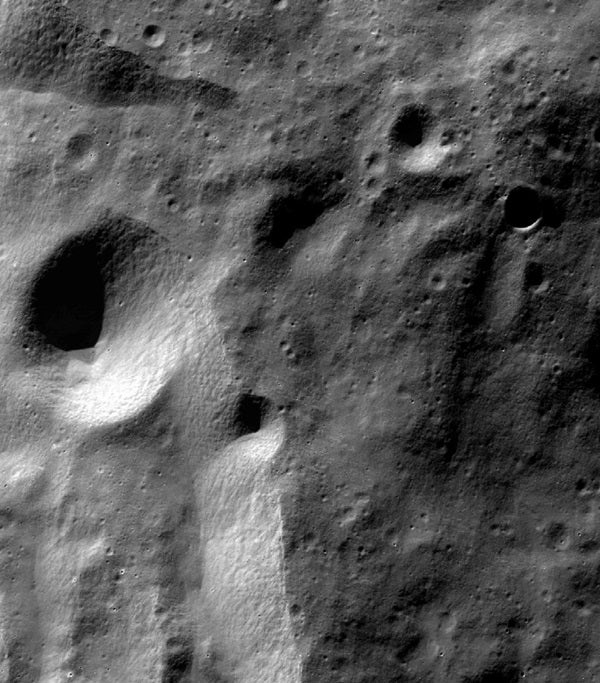The Indian Space Research Organisation’s lunar orbiter, Chandrayaan-1, released a probe that impacted close to the lunar south pole November 14. Following this, instruments on the orbiter are being turned on to get the science observations started.
Chandrayaan-1 dropped the Moon Impact Probe close to Shackleton crater near the south pole, where ice may exist in areas the Sun never illuminates. It carried three instruments: a video imaging system, a radar altimeter, and a mass spectrometer. The imaging system took pictures of the Moon as it approached the surface, the radar determined the altitude, and the mass spectrometer studied the thin lunar atmosphere.
After being released November 14, the probe took 25 minutes to reach the lunar surface. As it descended, the probe sent pictures to the orbiter that were later transmitted to Earth.
The Terrain Mapping Camera (TMC) and the Radiation Dose Monitor (RADOM) were functional by that time on the orbiter. After the probe’s impact, the remaining orbiter instruments began their commissioning activities.
During commissioning all standard operating modes of an instrument are exercised, and the data and housekeeping parameters are examined to verify that everything works properly.
The European near-infrared spectrometer SIR-2 was commissioned successfully November 19. The instrument was switched on and sent back housekeeping data indicating normal functionality. Science observations were started successfully November 20.
The Chandrayaan-1 X-ray Spectrometer (C1XS) was first activated November 23, and its commissioning is in progress.
The Sub-keV Atom Reflecting Analyzer (SARA) will be commissioned from December 7-10. The commissioning for this instrument will take longer than usual because the instrument operates at a high-voltage, which will be increased in steps.










